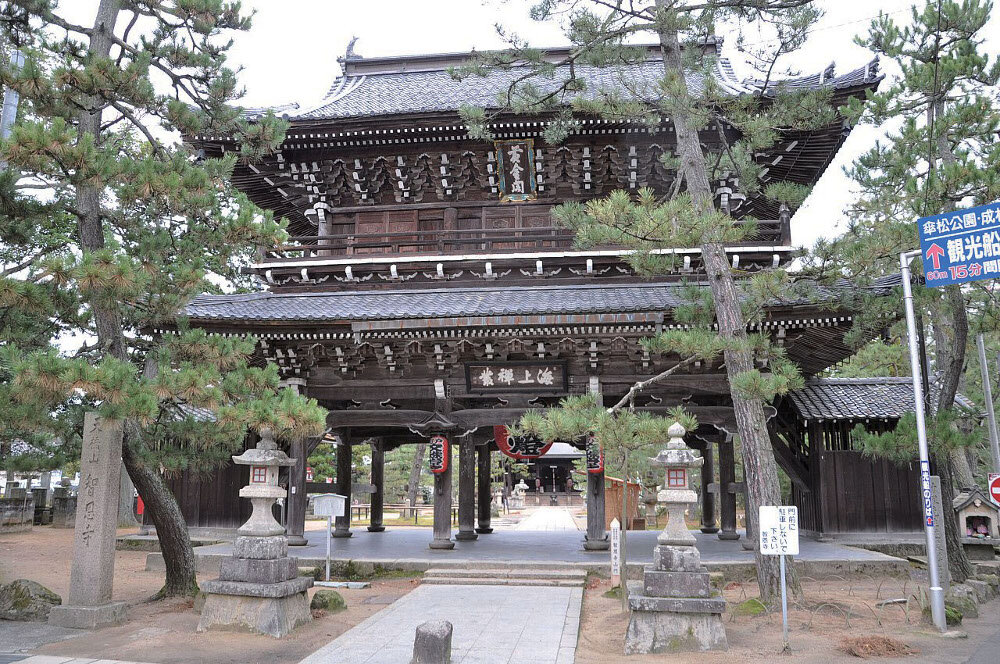Chionji Temple
Chionji Temple is located at the southern entrance to the Amanohashidate sandbar and is dedicated to Monju, the bodhisattva of wisdom. Legend says that Monju was summoned to the area by the primordial Shinto deity Ame no Oshihomimi to quell a mischievous dragon. The temple is believed to have been established in the early ninth century. Although exact construction dates for the main hall are unknown, some building materials have been dated to the Kamakura period (1185–1333). The temple’s principal object of worship is a statue of Monju riding atop a lion (shishi) and its style suggests it is also from the Kamakura period.
Amanohashidate was, for many years, the private property of Chionji until it was claimed as a National Forest in 1871. The temple was a customary stop for travelers visiting Amanohashidate or making a pilgrimage to Nariaiji Temple. Historically, travelers would have been ferried to the sandbar via boats launched from temple property.
The temple’s two-storied pagoda is the oldest wooden structure in the city of Miyazu, and was designated an Important Cultural Property of Japan in 1904. It was constructed in 1501 and its presence in View of Amanohashidate by Sesshu Toyo (1420–1506) enabled art historians to date the famous painting. The pagoda has an unusual kamehara (round white plaster covering on the lower roof) and enshrines a statue of Dainichi Buddha.
Chionji is also affiliated with wisdom mochi (chie no mochi), a popular adzuki bean and rice sweet that is sold at four tea shops just outside the temple gates.



